Additional Reprogramming and Hosting of Pics by DPC
Original Data Via
Kindness of Strangers E_CO Member


Serious Science, Serious Benefits
Examples of organic fast vegan foods
Most of us know that organically grown food is better for the Earth, and tastes better, but did you know it is also more nutritious? Many of us do not have time a lot of time to spend in the kitchen, admittedly the best way to insure a healthy, economical, and ecological food source is to grow it yourself organically (or buy from local organic farmers at your farmer's market) and cook it from scratch or eat raw, but for those times when that is just not practical here are some Organic, vegan convenience foods
Potential nutrients are lost during transportation and since most organics travel less far from their source to market there is no comparing them to what big agriculture is shipping (all too often prematurely harvested, another factor) across country or countries in refrigerated containers
i have been committed to eating organic since the mid 1980's so i speak from experience when i say, as we demand more organic foods our choices will grow, be sure to read your ingredients carefully as some of these companies still have animal based ingredients in some of their products! Namasté, nan
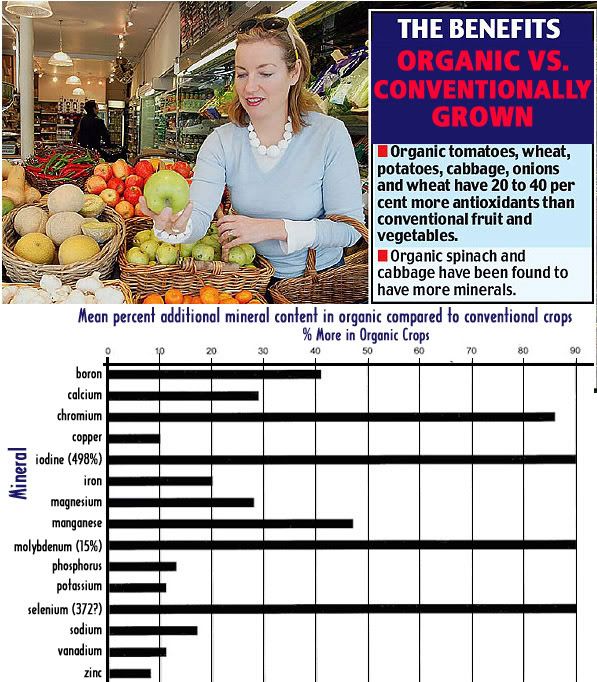
Chart and article source http://www. nutrition4health. org/nohanews/NNSp02NutQualOrganicVsConv. htm
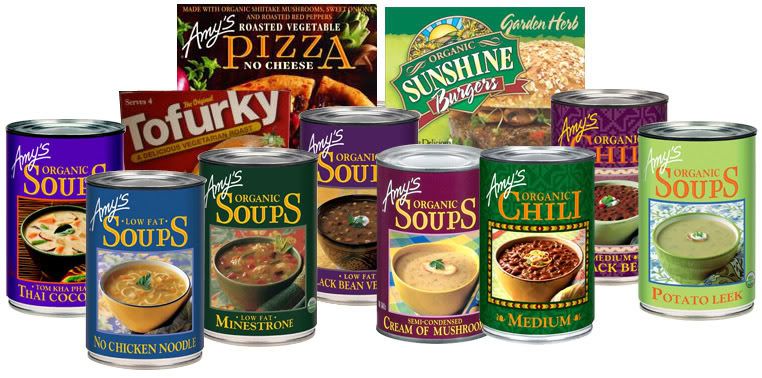
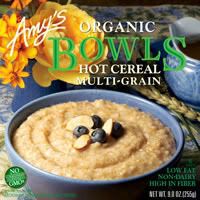
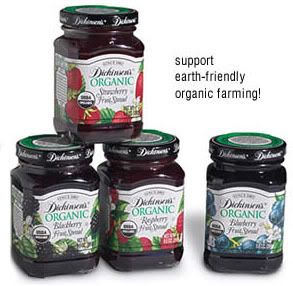
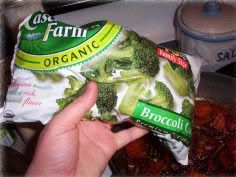
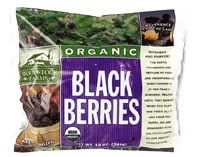
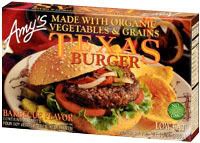
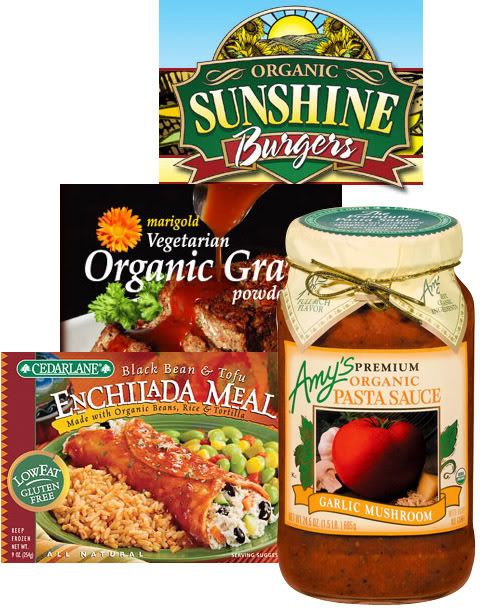
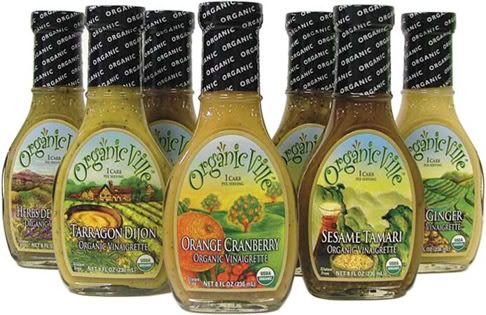
Nutritional quality of organic versus conventional fruits, vegetables, and grains*
"Prior to the widespread use of pesticides, those in the health care community who advocated organic foods claimed that these foods contained a better arrangement of nutrients as a result of the superior soil management and fertilizer practices used by organic farmers… As a corollary, they cautioned that food grown with chemical fertilizers caused deleterious health in animals and humans"*
In NOHA we have been concerned for many years about the deleterious health effects from residues of pesticides on foods, or even just ingested in our water… For example in NOHA NEWS, Summer 1999, we reported on the research of Professor Warren P Porter and colleagues, who gave their animals—just in their drinking water—tiny doses of pesticides, often used in agriculture, and nitrates which are ubiquitous from fertilizers in drinking water of people throughout the United States, especially in agricultural communities… With combinations at levels often found in our drinking water they found endocrine, immune, and behavioral effects in their mice
In her research,* Doctor Worthington does not deal with pesticide and fertilizer contaminants in our food and water but, specifically, with the nutrient and toxic (heavy metal and nitrate) constituents of our food… She combines the research from all available studies that give numerical figures for organic content of specific nutrients and toxins in various foods, (37 papers) and uses 1,240 comparisons
__________________________________ __________________________________
… tiny doses of pesticides, often used in agriculture, and nitrates which are ubiquitous from fertilizers in drinking water of people throughout the United States, especially in agricultural communities… With combinations at levels often found in our drinking water…endocrine, immune, and behavioral effects [were found] in… mice
__________________________________ __________________________________
__________________________________ __________________________________
… "ninety-five percent (95%) of crops in the United States are now produced with chemical fertilizers and pesticides…"
__________________________________ __________________________________
__________________________________ __________________________________
Organic farming encourages soil organisms, which can produce "many compounds that help plants, … [many] combine with soil minerals and make them more available to plant roots… The presence of these microorganisms at least partially explains the trend showing a higher mineral content of organic food crops"
__________________________________ __________________________________
__________________________________ __________________________________
Before World War II chemical fertilizers and pesticides were virtually unused… Some warnings about adverse health effects were ignored and farmers were encouraged… to abandon the old practices… and buy the easy-to-use chemicals… We are beginning to accumulate information on problems: "Animal studies suggest that such functions as reproduction and resistance to infection might be adversely affected…" A study on humans "reported that the percentage of normal sperm increased as the percentage of organic food in men's diets increased"
__________________________________ __________________________________
Original Data Via
Kindness of Strangers E_CO Member


Serious Science, Serious Benefits
Examples of organic fast vegan foods
Most of us know that organically grown food is better for the Earth, and tastes better, but did you know it is also more nutritious? Many of us do not have time a lot of time to spend in the kitchen, admittedly the best way to insure a healthy, economical, and ecological food source is to grow it yourself organically (or buy from local organic farmers at your farmer's market) and cook it from scratch or eat raw, but for those times when that is just not practical here are some Organic, vegan convenience foods
Potential nutrients are lost during transportation and since most organics travel less far from their source to market there is no comparing them to what big agriculture is shipping (all too often prematurely harvested, another factor) across country or countries in refrigerated containers
i have been committed to eating organic since the mid 1980's so i speak from experience when i say, as we demand more organic foods our choices will grow, be sure to read your ingredients carefully as some of these companies still have animal based ingredients in some of their products! Namasté, nan

Chart and article source http://www. nutrition4health. org/nohanews/NNSp02NutQualOrganicVsConv. htm








Nutritional quality of organic versus conventional fruits, vegetables, and grains*
"Prior to the widespread use of pesticides, those in the health care community who advocated organic foods claimed that these foods contained a better arrangement of nutrients as a result of the superior soil management and fertilizer practices used by organic farmers… As a corollary, they cautioned that food grown with chemical fertilizers caused deleterious health in animals and humans"*
In NOHA we have been concerned for many years about the deleterious health effects from residues of pesticides on foods, or even just ingested in our water… For example in NOHA NEWS, Summer 1999, we reported on the research of Professor Warren P Porter and colleagues, who gave their animals—just in their drinking water—tiny doses of pesticides, often used in agriculture, and nitrates which are ubiquitous from fertilizers in drinking water of people throughout the United States, especially in agricultural communities… With combinations at levels often found in our drinking water they found endocrine, immune, and behavioral effects in their mice
In her research,* Doctor Worthington does not deal with pesticide and fertilizer contaminants in our food and water but, specifically, with the nutrient and toxic (heavy metal and nitrate) constituents of our food… She combines the research from all available studies that give numerical figures for organic content of specific nutrients and toxins in various foods, (37 papers) and uses 1,240 comparisons
… tiny doses of pesticides, often used in agriculture, and nitrates which are ubiquitous from fertilizers in drinking water of people throughout the United States, especially in agricultural communities… With combinations at levels often found in our drinking water…endocrine, immune, and behavioral effects [were found] in… mice
__________________________________ __________________________________
She considers 35 vitamins and minerals, nitrate content, and sometimes total mineral content when that is all that is available, plus protein quantity and quality
For "conventional values" she uses the overall nutrient composition data for food from the US Department of Agriculture, because "ninety-five percent (95%) of crops in the United States are now produced with chemical fertilizers and pesticides… and producing crops using these chemicals has come to be known as conventional agriculture"
For each vegetable, fruit, and grain, using the figure for a specific year whenever possible, she takes from a study the figure for organic as a percentage change from the figure for conventional
For the five most frequently studied vegetables, lettuce, spinach, carrot, potato, and cabbage, she gives average percent differences for four nutrients… In no case was there sufficient data for her to calculate statistical significance… However, the figures are interesting: "For example, vitamin C is 17% more abundant in organic lettuce (conventional 100%, organic 117%)" In the case of spinach, average vitamin C content is 52% higher… We must remember that in actual practice, much variability occurs, not just from the cultivation methods and soil care by organic farmers versus conventional but also from "uncontrollable factors such as rainfall and sunlight, which also influence nutrient content"
For "conventional values" she uses the overall nutrient composition data for food from the US Department of Agriculture, because "ninety-five percent (95%) of crops in the United States are now produced with chemical fertilizers and pesticides… and producing crops using these chemicals has come to be known as conventional agriculture"
For each vegetable, fruit, and grain, using the figure for a specific year whenever possible, she takes from a study the figure for organic as a percentage change from the figure for conventional
For the five most frequently studied vegetables, lettuce, spinach, carrot, potato, and cabbage, she gives average percent differences for four nutrients… In no case was there sufficient data for her to calculate statistical significance… However, the figures are interesting: "For example, vitamin C is 17% more abundant in organic lettuce (conventional 100%, organic 117%)" In the case of spinach, average vitamin C content is 52% higher… We must remember that in actual practice, much variability occurs, not just from the cultivation methods and soil care by organic farmers versus conventional but also from "uncontrollable factors such as rainfall and sunlight, which also influence nutrient content"
… "ninety-five percent (95%) of crops in the United States are now produced with chemical fertilizers and pesticides…"
__________________________________ __________________________________
Most nutrients were measured in very few studies, so, even with well over a thousand individual comparisons, there were only twelve nutrients with sufficient data for a statistical comparison… They were calcium, copper, iron, magnesium, manganese, phosphorus, potassium, sodium, zinc, beta-carotene, vitamin C, and nitrates… Of these only five, vitamin C, iron, magnesium, phosphorus, and nitrates, showed statistically significant differences… "For each of the significant nutrients, the organic crops had a higher nutrient content in more than half of the comparisons… For the one toxic compound, nitrates, the organic crop had a lower content the majority of the time"
Even although there were not sufficient data for more statistical analyses, in a descriptive sense there were many interesting findings: "First, there appear to be higher amounts of nutritionally significant minerals in organic compared to conventional crops"
Note that three of these bars would go way beyond the 90% increase!
"For all four heavy metals considered, the organic crop contained lower amounts of the heavy metals more often than comparable conventional crops" Interestingly, in regard to protein, the conventional crops tended to contain more protein but the quality was poorer
Doctor Worthington points out supporting evidence for the superior results from organic farming practices… First of all, organic farmers fertilize their land with compost—plant wastes and aged animal manure… They rotate their crops so that one crop, for example a legume, can give nutrients to the next crop… In conventional farming, the same crop is often planted over and over again, which, of course, depletes the soil of all the particular nutrients needed by that crop… Sometimes, organic farmers have many plants growing together, which makes excellent fodder for animals… Sometimes the combination contains soybeans, which can be removed with special machinery and sold… The remaining plants are good food for animals, who do better without the soy… [Information from John Bell Clark, PhD, during a tour of Roseland Organic Farm, October 7, 2001, See also, NOHA NEWS, Winter 2002, "NOTES FROM AN ORGANIC FARMER"] Organic farming encourages soil organisms, which can produce "many compounds that help plants, including substances such as citrate and lactate that combine with soil minerals and make them more available to plant roots… The presence of these microorganisms at least partially explains the trend showing a higher mineral content of organic food crops"
Even although there were not sufficient data for more statistical analyses, in a descriptive sense there were many interesting findings: "First, there appear to be higher amounts of nutritionally significant minerals in organic compared to conventional crops"
Note that three of these bars would go way beyond the 90% increase!
"For all four heavy metals considered, the organic crop contained lower amounts of the heavy metals more often than comparable conventional crops" Interestingly, in regard to protein, the conventional crops tended to contain more protein but the quality was poorer
Doctor Worthington points out supporting evidence for the superior results from organic farming practices… First of all, organic farmers fertilize their land with compost—plant wastes and aged animal manure… They rotate their crops so that one crop, for example a legume, can give nutrients to the next crop… In conventional farming, the same crop is often planted over and over again, which, of course, depletes the soil of all the particular nutrients needed by that crop… Sometimes, organic farmers have many plants growing together, which makes excellent fodder for animals… Sometimes the combination contains soybeans, which can be removed with special machinery and sold… The remaining plants are good food for animals, who do better without the soy… [Information from John Bell Clark, PhD, during a tour of Roseland Organic Farm, October 7, 2001, See also, NOHA NEWS, Winter 2002, "NOTES FROM AN ORGANIC FARMER"] Organic farming encourages soil organisms, which can produce "many compounds that help plants, including substances such as citrate and lactate that combine with soil minerals and make them more available to plant roots… The presence of these microorganisms at least partially explains the trend showing a higher mineral content of organic food crops"
Organic farming encourages soil organisms, which can produce "many compounds that help plants, … [many] combine with soil minerals and make them more available to plant roots… The presence of these microorganisms at least partially explains the trend showing a higher mineral content of organic food crops"
__________________________________ __________________________________
On the other hand, the chemical fertilizers used in conventional agriculture contain just a few minerals, which dissolve quickly in damp soil and give the plants large doses of the minerals—just at one time and often more than is needed… For example, in the case of nitrogen, Doctor Worthington explains how:
Nitrogen from any kind of fertilizer affects the amounts of vitamin C and nitrates as well as the quantity and quality of protein produced by plants… When a plant is presented with a lot of nitrogen, it increases protein production and reduces carbohydrate production… Because vitamin C is made from carbohydrates, the synthesis of vitamin C is reduced also… Moreover, the increased protein that is produced in response to high nitrogen levels contains lower amounts of certain essential amino acids such as lysine and consequently has a lower quality in terms of human and animal nutrition… If there is more nitrogen than the plant can handle through increased protein production, the excess is accumulated as nitrates and stored predominately in the green leafy part of the plant… Because organically managed soils generally present plants with lower amounts of nitrogen than chemically fertilized soils, it would be expected that organic crops would have more vitamin C, less nitrates and less protein but of a higher quality than comparable conventional crops
Potassium fertilizer can reduce the magnesium content and indirectly the phosphorus content of at least some plants… When potassium is added to soil, the amount of magnesium absorbed by plants decreases… Because phosphorus absorption depends on magnesium, less phosphorus is absorbed as well… Potassium is presented to plants differently by organic and conventional systems… Conventional potassium fertilizers dissolve readily in soil water presenting plants with large quantities of potassium while organically managed soils hold moderate quantities of both potassium and magnesium in the root zone of the plant… Given the plant responses just described, it would be expected that the organic crops would contain larger amounts of magnesium and phosphorus than comparable conventional crops
Some chemical fertilizers also contain toxic heavy metals… "Phosphate fertilizers often are contaminated by cadmium… Also, trace mineral fertilizers and liming materials derived from industrial waste can contain a number of heavy metals…" Since these toxins would build up in the soil and contaminate plants, the finding of more heavy metals in conventional food might be expected
Nitrogen from any kind of fertilizer affects the amounts of vitamin C and nitrates as well as the quantity and quality of protein produced by plants… When a plant is presented with a lot of nitrogen, it increases protein production and reduces carbohydrate production… Because vitamin C is made from carbohydrates, the synthesis of vitamin C is reduced also… Moreover, the increased protein that is produced in response to high nitrogen levels contains lower amounts of certain essential amino acids such as lysine and consequently has a lower quality in terms of human and animal nutrition… If there is more nitrogen than the plant can handle through increased protein production, the excess is accumulated as nitrates and stored predominately in the green leafy part of the plant… Because organically managed soils generally present plants with lower amounts of nitrogen than chemically fertilized soils, it would be expected that organic crops would have more vitamin C, less nitrates and less protein but of a higher quality than comparable conventional crops
Potassium fertilizer can reduce the magnesium content and indirectly the phosphorus content of at least some plants… When potassium is added to soil, the amount of magnesium absorbed by plants decreases… Because phosphorus absorption depends on magnesium, less phosphorus is absorbed as well… Potassium is presented to plants differently by organic and conventional systems… Conventional potassium fertilizers dissolve readily in soil water presenting plants with large quantities of potassium while organically managed soils hold moderate quantities of both potassium and magnesium in the root zone of the plant… Given the plant responses just described, it would be expected that the organic crops would contain larger amounts of magnesium and phosphorus than comparable conventional crops
Some chemical fertilizers also contain toxic heavy metals… "Phosphate fertilizers often are contaminated by cadmium… Also, trace mineral fertilizers and liming materials derived from industrial waste can contain a number of heavy metals…" Since these toxins would build up in the soil and contaminate plants, the finding of more heavy metals in conventional food might be expected
Before World War II chemical fertilizers and pesticides were virtually unused… Some warnings about adverse health effects were ignored and farmers were encouraged… to abandon the old practices… and buy the easy-to-use chemicals… We are beginning to accumulate information on problems: "Animal studies suggest that such functions as reproduction and resistance to infection might be adversely affected…" A study on humans "reported that the percentage of normal sperm increased as the percentage of organic food in men's diets increased"
__________________________________ __________________________________
Before World War II chemical fertilizers and pesticides were virtually unused… Some warnings about adverse health effects were ignored and farmers were encouraged by much advertising and by advice from their County Agents to abandon the old practices, be modern, and buy the easy-to-use chemicals… We are beginning to accumulate information on problems: "Animal studies suggest that such functions as reproduction and resistance to infection might be adversely affected by conventionally produced foods as compared to organically produced ones" A study on humans "reported that the percentage of normal sperm increased as the percentage of organic food in men's diets increased"
*Worthington, Virginia, MS, ScD, CNS, The Journal of Alternative and Complementary Medicine, 7(2): 161-73, 1991, "This paper is an extension of work performed as part of doctoral dissertation at Johns Hopkins University, Baltimore, Maryland"
Article from NOHA NEWS, Volume XXVII, Number 2, Spring 2002, pages 1-3
*Worthington, Virginia, MS, ScD, CNS, The Journal of Alternative and Complementary Medicine, 7(2): 161-73, 1991, "This paper is an extension of work performed as part of doctoral dissertation at Johns Hopkins University, Baltimore, Maryland"
Article from NOHA NEWS, Volume XXVII, Number 2, Spring 2002, pages 1-3
My wonderful friend ♥ Linda ♥ Go Veg{etari}an for World Veg Week ♥ and i have been planning this bulletin for a long time,
hope you like it! And feel free to use the graphics,
however please download and put in your own photobucket. com site as if you just use mine it will exceed bandwidth
Order Your FREE Vegetarian Starter Kit!
Show All Bulletins Linda Has Posted
PS i should have said before i posted this that i do not approve of feeding toxins to mice but wanted to share this information anyway, thank you for reposting, and see my blogs for how to grow organic food as an edible landscape! To learn more about why animal testing is not necessary or safe, check out Physicians for Responsible Medicine and add my friend My friend Jill ~ Living... "Cruelty-Free!" does some very informative bulletins about animal testing you can see her bulletins by clicking here:
Serina/ Seb*Strength through Peace
Susan Kegley - Pesticide Contamination in Food
http://www. youtube. com/watch?v=yNW5DFpi2vY
Thank you
Heart Warrior
Cuter Than Kitten Britches ॐ
THE MOST CONTAMINATED FRUITS & VEGETABLES:
1 PEACHES: Over 94% tested positive for traces of 45 different pesticides
2 CELERY 94% tested positive for 29 different pesticides
3 APPLES: 92% tested positive for 36 pesticides
4 SWEET BELL PEPPERS: 68% tested positive for 39 different pesticides
5 CHERRIES: 91% tested positive for 25 different pesticides
6 IMPORTED GRAPES: 86% tested positive for 35 different pesticides
7 NECTARINES: 97% tested positive for 26 different pesticides
8 PEARS : 94% tested positive for 35 different pesticides
9 POTATOES: 79% tested positive for 29 different pesticides
10 RASPBERRIES: 59% tested positive for 39 different pesticides
11 SPINACH: 83% tested positive for 36 different pesticides
12 STRAWBERRIES: 90% tested positive for 36 different pesticides
THE LEAST CONTAMINATED FRUITS AND VEGETABLES:
1 ASPARAGUS
2 AVOCADOS
3 BANANAS
4 BROCOLLI
5 CAULIFLOWER
6 SWEET CORN
7 KIWI
8 MANGOES
9 ONIONS
10 PAPAYAS
11 PINEAPPLES
12 SWEET PEAS
Source

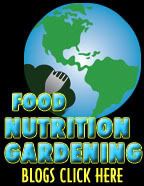


Kindness of Strangers E_CO Member usually does environmental and nutritional education work through
Donate here to Kindness of Strangers a project of the 501 (c) 3 non-profit International Humanities Center

